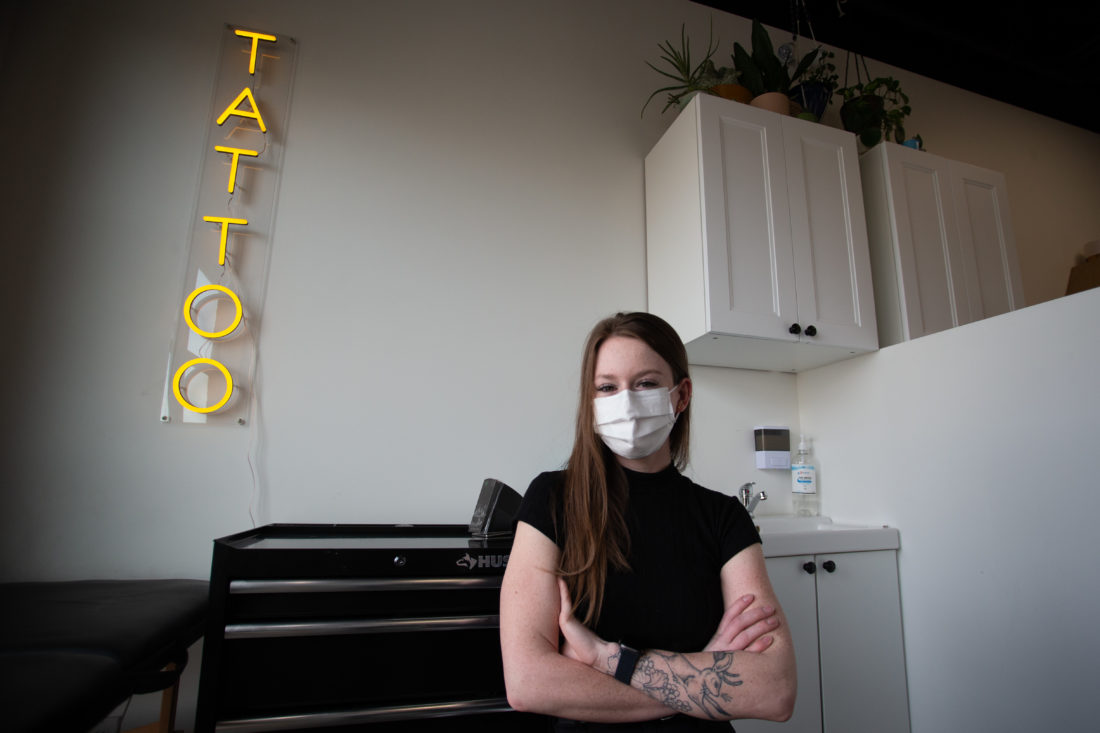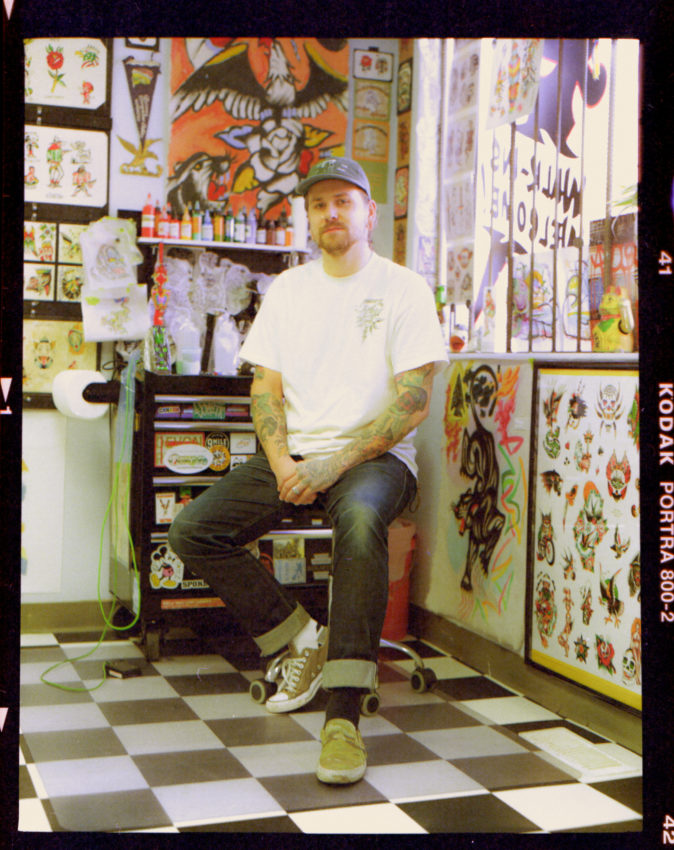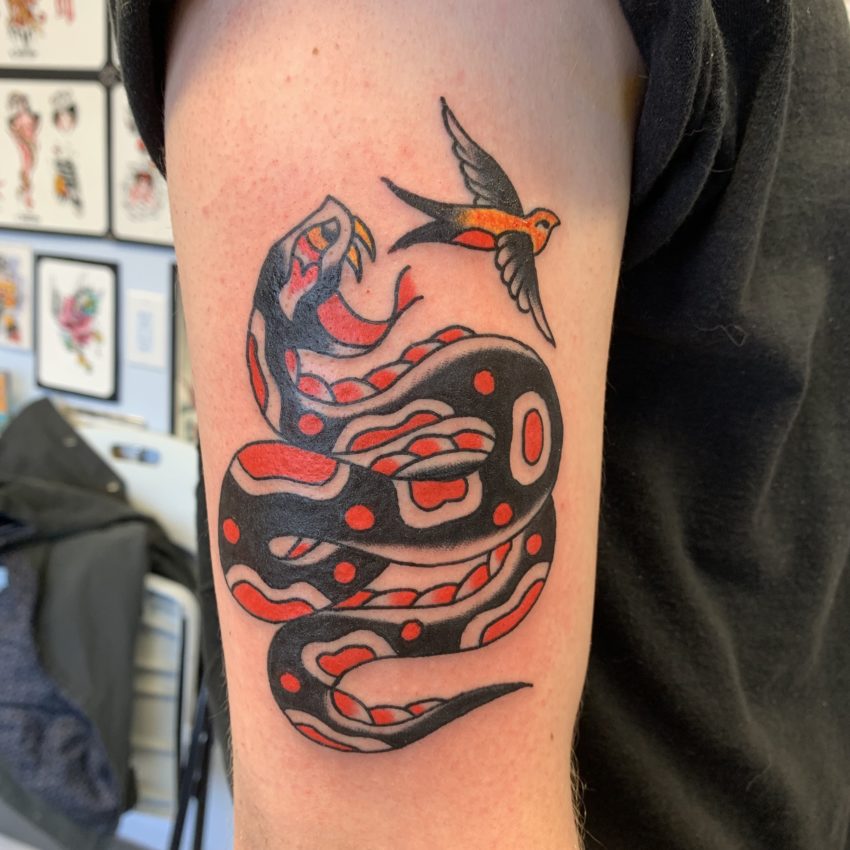
Art collection has seen many revolutions throughout history, each sparked by practices that broaden the consumer base. The current boom in the tattoo industry sings a similar tune.
Once seen as a bold declaration of one’s carceral history, tattoos have since strutted into the contemporary art scene and demanded the attention of many. As a long-standing practice with highly skilled artists spawning all cultures and backgrounds, it is high time for a little appreciation.
Tattoos are no recent fad — practices are thought to extend as far back as the fifth century , and have been a spiritual and decorative tradition of many Indigenous peoples.
Simply by looking at the people around us on the daily, it’s easy to see how common the art form has become. More than ever in Western cultures, people are getting tattooed. We have progressed beyond the stigma surrounding adorning your body with ink.
Haley Gardiner, owner of and artist at Honey Bee Tattoo Collective, says she has seen the culture change in Saskatoon in the five years she has been tattooing.
“The industry was already in the middle of a really big shift. Even since then, specifically in Saskatoon, I feel like it’s changed a lot,” Gardiner said.
“You’re seeing a lot more modern styles, like fine-line and watercolor and micro-realism, that you didn’t see really at all when I started.”
Keely Mooney, a first-year Sociology student at the University of Saskatchewan, says that the shift in acquiring tattoos has especially been reflected in younger generations.
“A lot of people my age, in their early 20s and 30s, have tattoos, even if it’s just a small one,” Mooney said. “It tends to be more accepted.”
This evolution in Western countries has not been experienced to the same extent in some places abroad. The stigma remains in Japan and South Korea, for example, that tattoos are for social outcasts and gang members. In Korea, only practitioners with a medical license are legally qualified to give tattoos.

A big contributor to the perspective shift on tattoos is social media, both internationally and locally. Saskatoon tattoo artist Timothy Turner has experienced its influence first-hand.
“This is an age of information, where not only do more people know about tattoos because more people are getting tattooed, but the average client has more resources to find tattoos that they like,” said Turner.
Despite a greater visibility for tattoo artists and their practice, some hesitancy remains. Nearly anyone with tattoos has received remarks from friends, family and passersby about the permanence of the art in their skin.
Turner is aware of this, but doesn’t see it making much of an impact.
“It’s old mindsets or one-track mindedness,” Turner said. “There are some people who just don’t get it, and I don’t think they will. And that’s okay, but their voice isn’t really going to steer the ship.”

But what, exactly, has caused the most recent surge in demand for tattoos? Gardiner says that the centering of self-expression among younger generations has increased the appeal of an art collection that you carry with you everywhere, reflecting your identity.
“It’s so much more personal and meaningful when [the art] is going on your body forever,” Gardiner said.
She also sees the COVID-19 pandemic as a major catalyst.
“I personally think that right now, there’s a huge boom because of quarantine, kind of the same as dyeing your hair after a breakup,” Gardiner said. “Everyone just went through this period of growth and we’re coming out as new people.”
Alongside the increase in professional ink, DIY hand-poked styles have also gained significant notoriety recently.
While some people prefer tattoos from artists using tattoo guns, others are drawn to the spontaneity — and perhaps the rebellion — of stick-and-poke tattoos. This home-made, tattoo-your-friends style involves hand-poking the ink into the skin with a needle, reminiscent of traditional cultural practices.
While many artists lament the dozens of botched basement tats they’ve covered up, Turner takes a different stance.
“Before I really tattooed, I would always commemorate special occasions with my friends by doing stick-and-pokes. I’m all about it,” Turner said.
Regardless of the method, tattoos have come to serve as an encapsulation of one’s being, a snapshot of one’s identity. Whether steeped in symbolism, or merely “to create an aesthetic,” as Gardiner phrases it, tattoos have become a staple in today’s culture of youth expression.
Mooney, a tattoo enthusiast herself, believes the evolution is here to stay.
—
Gavin Robertson | Contributing Reporter
Cover Photo: Nicholas Saretzky | Contributing Photojournalist